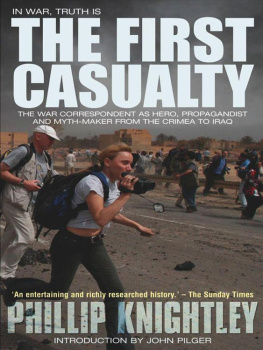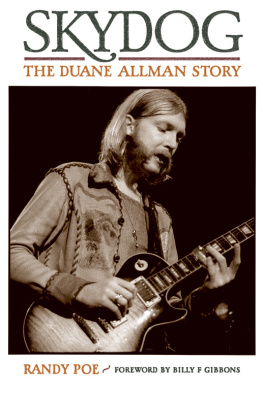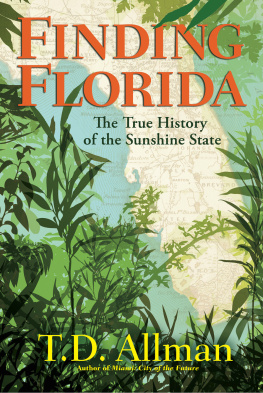First published 1980 by Schenkman Publishing Company, Inc.
Published 2017 by Routledge
2 Park Square, Milton Park, Abingdon, Oxon OX14 4RN
711 Third Avenue, New York, NY 10017, USA
Routledge is an imprint of the Taylor & Francis Group, an informa business
Copyright 1980 by Schenkman Publishing Company, Inc.
All rights reserved. No part of this book may be reprinted or reproduced or utilised in any form or by any electronic, mechanical, or other means, now known or hereafter invented, including photocopying and recording, or in any information storage or retrieval system, without permission in writing from the publishers.
Notice:
Product or corporate names may be trademarks or registered trademarks, and are used only for identification and explanation without intent to infringe.
Library of Congress Cataloging in Publication Data
Allman, Phillip H.
Military retirees in Central America and Mexico.
Bibliography: p.
Includes index.
1. Retired military personnel United States. 2. Americans in Central America. 3. Americans in Mexico. I. Title.
UB443.A44 301.44 4 79-19777
ISBN 0-87073-826-7
ISBN 0-87073-825-9 pbk.
ISBN 13: 978-0-87073-856-2 (hbk)
ISBN 13: 978-0-87073-825-8 (pbk)
The preparation of a book of this nature entails personal contact with a wide range of individuals from whom information, advice, and assistance are required. Recognition of all these persons is obviously an impossibility. Consequently, I would like to extend my appreciation to those individuals who are not specifically named, but who shared in this experience. This especially applies to the military retiree population of Central America and Mexico, without whose friendliness and cooperation this work could not have been completed.
I am particularly indebted to Dr. Robert N. Thomas, Professor of Geography, Michigan State University, who stimulated my interest in Latin America and migration theory. His guidance and professional advice were instrumental in my decision to undertake this task. Other professors at Michigan State University whom I wish to thank for their support are Dr. Clarence L. Vinge and Dr. Clarence W. Minkel of the Department of Geography, Dr. James Zuiches of the Department of Sociology, and Lt. Col. Francis L. Brokaw of the Department of Military Science.
The courtesies and assistance extended by many persons representing various organizations and institutions during residence in Central America and Mexico contributed immeasurably in the collection of data. In Guatemala, those individuals especially helpful were Ing. Jose Lopez Toledo of the Office of Geographic Studies, Ministry of Public Works; Col. (Ret.) James Norman of the American Chamber of Commerce; Mr. Romeo Routhier, Adjutant of the American Legion post; Mr. Alexander Gregg of the Inter-American Geodetic Survey; Col. Hook and Sgt. Richard Allen of the U. S. Defense Attache Office; Maj. Richard Gillespie of the U. S. Military Group; and Dr. Terry McIntosh from Florida International University. Assistance was given to me in El Salvador by Lt. Col. Rodriguez and CWO Schonstron of the U. S. Defense Attache Office, Mr. Al Holbum of the Inter-American Geodetic Survey, and Mr. Robert Hoffman of the American Chamber of Commerce. Ed Rosenfeld, former owner of the Costa Rica Grapevine published weekly in San Jose, Costa Rica, and a newly acquired friend during the February 1976 earthquake in Guatemala, expedited my activities in San Salvador by giving his time freely as a guide around the city.
Valuable information was provided in Honduras by Col. Fessenden, U.S. Defense Attache; Col. Crowe, Commander, U.S. Military Group; Mr. Rodney Saubers, Cartographic Representative, Inter-American Geodetic Survey; and Mr. Guillermo Emilio Cardona, Honduras Tourism Institute. Those persons in Nicaragua to whom I am most grateful for their help are Lt. Col. E. Meserve, U.S. Defense Attache, and his assistant CWO Blessing; and Mr. Francis Nolan of the Inter-American Geodetic Survey. In Panama Lt. Col. Herman Bell, Public Affairs Officer, U.S. Forces Southern Command; Mr. Norman Fassett, Deputy Director, Inter-American Geodetic Survey; and Mr. Enrique Diez, Director, Department of Personnel, Panama Tourist Institute, provided information that was useful in preparing the more generalized material on that area.
In Costa Rica, the most significant of the countries surveyed, special appreciation is extended to Col. (Ret.) John J. Caulfield and Cdr. (Ret.) Wade Harding of the Costa Rica Retired Officers Association; Mr. Floyd (Pete) Rader, Adjutant of the American Legion post; Mr. Robert Senter, U.S. representative of the Inter-American Geodetic Survey; Mr. Carlos Lara, Director of the Costa Rican Tourism Institute; and Lt. Col. Robert Trdla and SFC Arthur Martinez of the U.S. Military Group. Special thanks is also given to personnel of the latter organization for their assistance and for allowing me to use their facilities as a base of operations in the San Jose area.
My work in Chapala, Mexico was achieved only through the cordial assistance of Mr. J. W. Cohn, a retired U.S. executive and friend, who got me started initially; Lt. Col. (Ret.) Robert Davis of the Chapala Chapter Retired Officers Association; and Capt. (Ret.) Gordon Riddle of the Chapala post, American Legion. In San Miguel de Allende, Mexico Lt. Col. (Ret.) Webb Threet and 1st Sgt. (Ret.) Ted Lewis, members of the San Miguel American Legion post; and Mr. Stirling Dickinson, Director, Instituto Allende, provided some helpful information on both retirees and activities in that area.
Credit is due the Departments of Army, Navy, and Air Force, and the Marine Corps; the Retired Officers Association, especially to Col. (Ret.) Minter Wilson; and the Army Times Publishing Company for much of the general and statistical information on military retirees. Mr. John Beach, editor of the Harrison Post, Fort Harrison, Indiana, was helpful in obtaining statistics on Army retirees and Professor Joseph Kuszai, Department of Graphic Design, Michigan State University, provided technical advice and assistance during the preparation of the typeset copy.
Final appreciation is given to my wife, Daisy, for her understanding and patience throughout the project; her sharing in the travels and trials of data collection in Mexico and Central America, including the major Guatemala earthquake experience in February 1976; and for her secretarial and editorial assistance from beginning to end
The recent severe winters experienced in the United States, combined with escalated fuel prices and other unattractive conditions such as higher taxes, inflation, crime, urban decay, etc., have forced numerous American retirees south to more climatically favorable and economically amenable areas. Many have ventured into foreign lands in search of these amenities and some have established retirement residency in the nations south of our international border. Among these adventurous retiree migrants are significant numbers of American military retirees who have histories of extensive foreign travel and residence during their military careers. This book is about that migrant group and its settlement in Central America and parts of Mexico. It examines the places where these migrants have settled, determines why they have chosen those specific places for retirement, describes their characteristics, explains how the migration takes place, and discusses its consequences. Also, it provides a brief history of United States military personnel in foreign areas, with emphasis on the relationship between their frequent relocation and their propensity to migrate after retirement, and describes the world distribution of the 1.2 million members that comprise the military retiree population.











